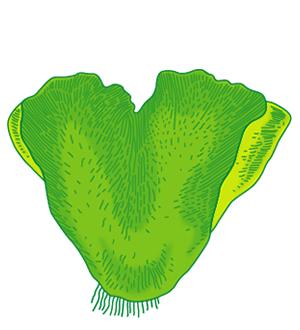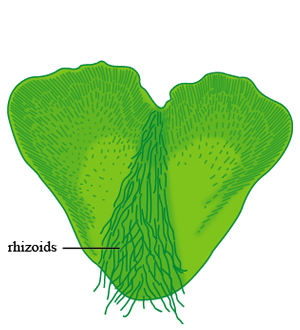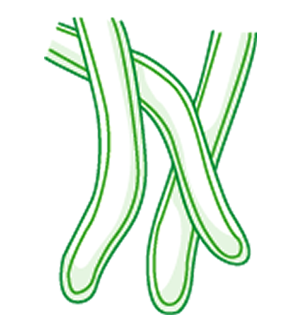Hornworts 角苔 (Anthocerophyta)
The common name of this group, hornworts, refers to a prominent feature of the group: the upright elongated horn-like sporophytes embedded on the top of the gametophyte.
The gametophyte of hornworts appear as a rosette-like thallus with sunken antheridia and archegonia on the dorsal surface and rhizoids on the ventral side. Often, the photosynthetic cells contain a single large chloroplast with a pyrenoid, which may reflect an ancestral condition. Some species like Anthoceros contain extensive internal cavities often inhabited by nitrogen-fixing bacteria.




Gametophyte of a hornwort
Like other bryophytes, the sporophyte of hornworts remains attached to the gametophyte for nutrient and attachment. Yet the young green needle cylindrical structure is photosynthetic and grows continuously throughout its life from a basal intercalary meristem. As it grows, the mature part at the tip region splits into two halves lengthwise to release spores.
Let’s explore one of the genera of this unusual group of plants, Anthoceros.